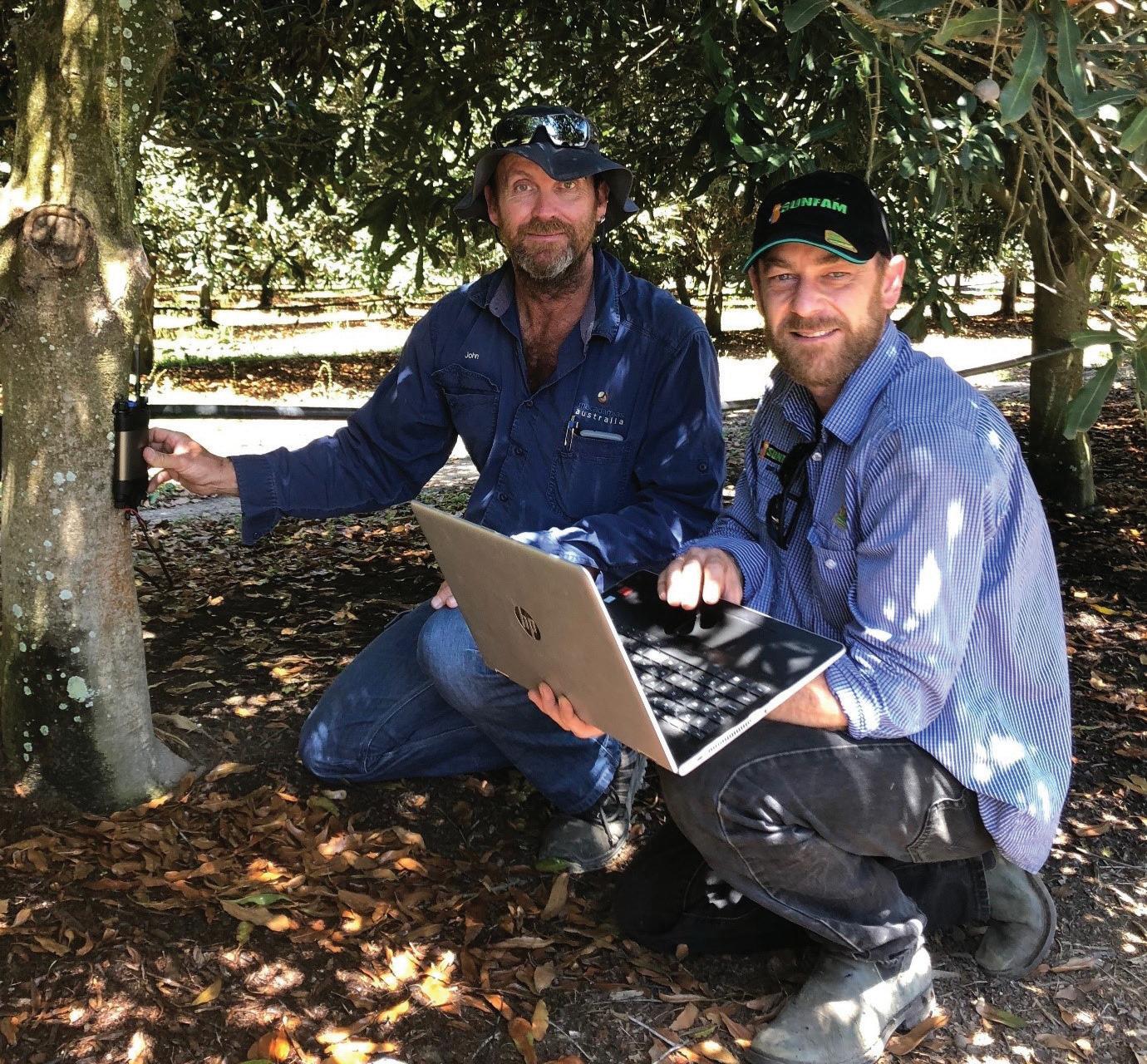
2 minute read
Irrigation scheduling options: pros and cons
With the advent of cloud technology, the ability to adopt irrigation sensor hardware has never been greater. Combined with new sensor development, analytics and satellites, this provides irrigators with great opportunities to drive agribusiness production improvements through smart irrigation scheduling.
There are four main methods used to schedule irrigation: climate-based, soil moisture monitoring, remote sensing and plant sensors. In this article, Tim Hyde from SWAN Systems takes us through some of the pros and cons of each type.
CLIMATE-BASED SCHEDULING
Climate-based scheduling determines daily evapotranspiration and multiplies this by the crop coefficient for a crop at a particular growth stage. ✔Pre-determined crop co-efficients are publicly available and used as the benchmark for many irrigated industries. ✘ Small differences like varieties, rootstocks, crop load, soil type and root depth can have a dramatic effect on the water requirements of a crop.
SOIL MOISTURE MONITORING
Soil moisture probes (e.g. tensiometers, gypsum blocks and capacitance probes) have been available for more than 30 years. ✔They are a low-cost and widely used way of getting a better understanding of what the plant is doing via the soil medium. The recent migration of most data to the cloud has allowed for easy and relatively cheap monitoring of the soil moisture balance in irrigated crops. ✘ In-field hardware often gets broken, batteries go flat or they are not calibrated/installed correctly (and thus don’t represent the true soil moisture balance of a particular site). The trends are very consistent with modelling, but the numbers are then of little use, as they don’t represent what is actually going on in the soil.
REMOTE SENSING
Satellite/remote sensing irrigation scheduling is relatively new. While there are great opportunities, its best use is as a part of the irrigation management suite. The main reason for this is that, unless crop specific details are known, then aspects like drainage and runoff cannot be modelled or fully appreciated in calculations. ✔This technology offers great opportunities, as it is easy to implement and low cost. ✘ The main issues are infrequent captures and poor image quality as a result of cloud cover.
PLANT SENSORS
The latest trend is plant-based sensors, which have been available for some time but have only recently started to become a more complete system for irrigation scheduling. Plant-based sensors include sap flow, dendrometers and canopy temperatures. ✔These sensors are good at letting a manager know exactly what is going on with the plant. ✘ They face the same issues as with in-field hardware such as breakage, sample size and interpretation for accurate management insights.
Sap flow monitoring is being used with tree crops such as macadamias to schedule irrigation. Photo courtesy Australian Macadamia Society News Bulletin.
MATCHING TECHNOLOGY TO BUDGET AND MANAGEMENT SYSTEM THE KEY
The options for irrigation scheduling vary a lot - and these options may or may not suit different crops, regions and management systems.
Importantly, all systems provide valuable insights that can (and should, where practicable) be combined to provide a clearer picture of plant water requirements.
Within the confines of budget and management system, the aim is to combine technology to derive as much meaningful information as possible, e.g. soil moisture monitoring, satellite imagery and plant-based sensor data, so that accurate decisions can be made.
Having a clearer understanding of all this data and combining it with weather forecast information, will give users access to the most reliable and accurate irrigation scheduling tool available.
Tim Hyde, CEO SWAN Systems










